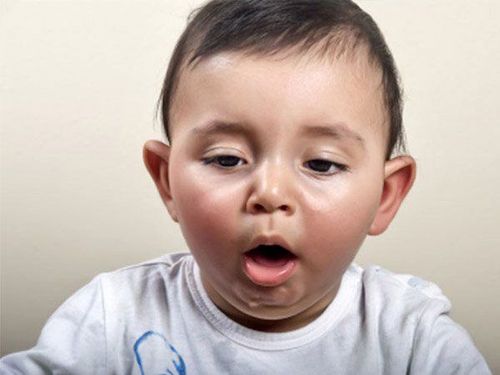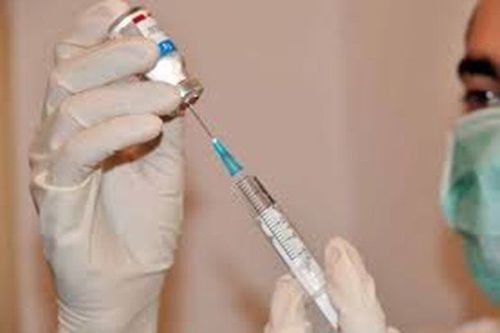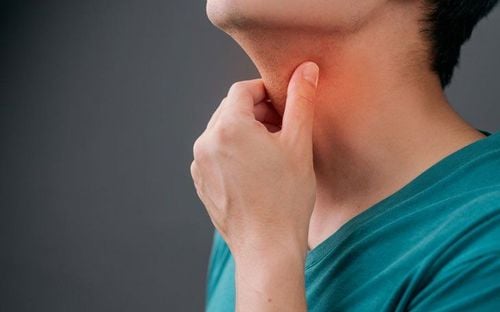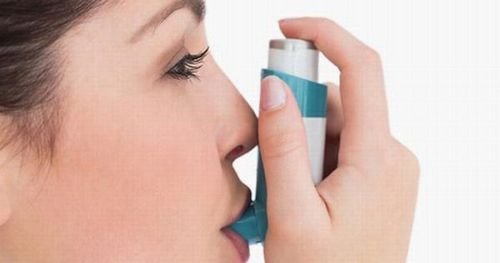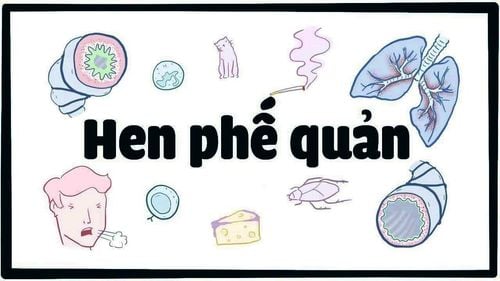This is an automatically translated article.
The article is written by Master, Doctor Ma Van Tham - Department of Pediatrics - Neonatology - Vinmec Phu Quoc International General Hospital.Wheezing is a high-pitched, whistling sound that occurs when the small airways are narrowed due to bronchospasm, mucosal thickening due to inflammation, edema, excessive secretions, or a foreign body in the airways. It is heard mainly during expiration due to some degree of airway obstruction. It has a wide variety of tones when the airways are narrow to varying degrees as in asthma. Monophonic wheezing is produced in the larger airways during expiration such as the trachea or distal bronchi.
1. Asthma
Asthma is an important cause of wheezing in children.Three types of infant wheezing were identified:
Transient early wheezing: 19.9% of the general population, had wheezed at least once with a lower respiratory tract infection before 3 years of age but never recurred. Frequent persistent (persistent) wheezing: 13.7% of the general population, wheezing onset before age 3 and still wheezing after age 6 Late-onset wheezing: 15% of the general population, no onset wheezing before age 3 with late onset at age 6. Of all children with wheezing with onset before age 3, nearly 60% ceased wheezing by age 6. Risk factors for ongoing wheezing include maternal asthma, maternal smoking, persistent rhinitis (part of an upper respiratory tract infection), and eczema under 1 year of age.
Clinical phenotypes suggestive of asthma diagnosis:
Multifactorial wheezing: At least 2 factors common to asthma onset lead to wheezing after 3 years of age. Persistent wheezing: Symptoms persist between episodes of wheezing between 1 and 6 years of age. Frequent wheezing: Wheezing at least once a month for 1 year from 1 to 6 years of age Intermittent wheezing: Wheezing with onset of respiratory viral infection between 1 and 6 years of age.

Nguyên nhân thở khò khè ở trẻ em thường do hen phế quản
2. Infection
The association between viral infection, wheezing, and the likelihood of developing asthma varies with age, atopy, and environmental factors.Bronchiolitis is an acute infection of the lower respiratory tract that occurs mainly in young children, usually between 2-24 months of age. 75% occur in children under 1 year of age, and 95% in children under 2 years of age. The highest frequency of occurrence is from 6-18 months of age. The annual incidence is 11.4% in infants less than 1 year of age and 6% in children 1 to 2 years of age. The disease accounts for 4,500 deaths and 90,000 hospitalizations in a year. Frequency may be higher in urban areas.
Bronchiolitis is usually caused by a viral infection of the small airways, the bronchioles, with RSV as the main cause, followed by rhinovirus. Inflammation of the bronchial epithelial cells causes increased mucus secretion, cell death, and swelling, followed by lymphocytic infiltration in the bronchioles. The combination of cellular debris and edema of the inflamed bronchioles severely narrows and obstructs the small airways. Decreased ventilation of part of the lung causes perfusion disturbances, leading to hypoxia. During expiration, the relative narrowing of the airways results in reduced airflow and consequent trapping or trapping. Inspiratory work is increased due to an increased amount of the final exhaled lung and decreased lung compliance. Recovery of respiratory epithelial cells begins to occur after 3-4 days, but cilia do not regenerate for about 2 weeks. Debris is cleared by macrophages. Infection is spread by direct contact with respiratory secretions. Prior infection with common viral pathogens does not confer active immunity.
Not all young children with the virus get a lower respiratory tract infection (LRTI). The child's anatomical and immunological factors play an important role in the severity of clinical symptoms. Children with pre-existing narrowed airways and reduced lung function may present more severely. In addition, RSV infection provokes a complex immune response and children with wheezing exhibit higher levels of airway interferon-γ and leukotrienes. RSV co-infection with metapneumovirus may be more severe than monoinfection. Human metapneumovirus (hMPV), like human RSV, is classified in the subfamily Pneumovirinae of the family paramyxoviridae. However, it is primarily genetically related to metapneumovirus avian influenza.
There is evidence that a lack of antiviral activity and integrity of the respiratory epithelial barrier may make patients with bronchial asthma more likely to develop severe upper respiratory tract infections. more severe, and thus increase the risk of exacerbation. Advanced molecular biology diagnostics has identified human rhinoviruses (HRVs) as common pathogens causing wheezing in young children. Wheezing during HRV infection at an early age is associated with a higher risk of developing asthma. HRV infection promotes the expression of factors involved in airway damage and remodeling including amphiregulin, activin A, and VEGF. Recently, it has been shown that HRV infection in epithelial cells also induces TLR-3-dependent mucus hyperplasia and upregulation of epidermal growth factor receptor, a well-known active in the renewal and repair of respiratory epithelium.
Other infectious causes also associated with acute wheezing include acute laryngitis, acute bronchitis, mycoplasma pneumonia, lung abscess.
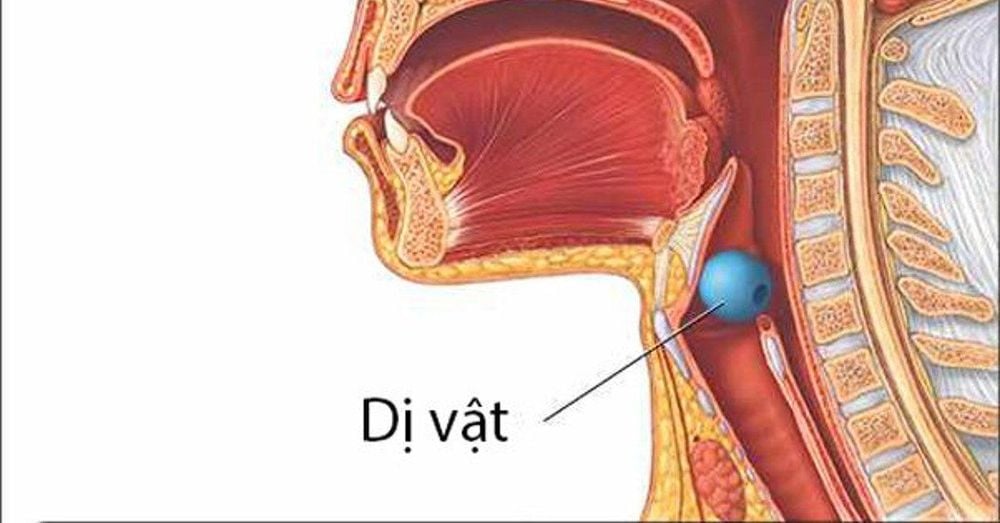
Nguyên nhân thở khò khè khởi phát cấp tính có thể do dị vật đường thở
3. Foreign body in the airway
Airway foreign bodies should be removed in children with acute-onset wheezing, especially those with unknown infiltrative syndrome or neglected airway foreign body.A detailed history of the circumstances of the onset of wheezing should be clarified. The diagnosis is clear if acute-onset infiltrative syndrome is present, but in no small part is unexplorable. The rate of airway foreign body with obvious infiltration syndrome is about 80%. The most common age is < 3 years old, accounting for 80%, most are 1-2 years old and very rare at the age of < 6 months.
Clinical examination should look for signs suggestive of the diagnosis. Any child with focal wheezing or focal rales should consider an airway foreign body. The most common site is the right lung about 60%, the left lung about 20%, the trachea 13%. Rarely, an airway foreign body can cause a diffuse pulmonary response and polyphonic wheezing.
Chest X-ray should look for signs suggestive of air retention or focal atelectasis. However, other causes, such as asthma or bronchiolitis, also cause localized air trapping. Having the patient take 2 x-rays of inspiration and expiration can help identify air traps. However, the absence of these findings does not rule out the diagnosis.
Usually, airway foreign bodies do not respond to bronchodilators.
Some cases of esophageal foreign bodies can also cause acute-onset wheezing if large foreign bodies compress the airways. Taking the history of swallowing abnormalities, dysphagia helps to suggest the diagnosis.
In addition, in order to prevent diseases that young children often get, parents should pay attention to nutrition to improve children's resistance. At the same time, add supporting foods containing lysine, essential micro-minerals and vitamins such as zinc, chromium, selenium, B vitamins,... snacks and less digestive problems.
Parents can learn more:
Why do you need to supplement Lysine for your baby?
The role of zinc - Guidelines for reasonable zinc supplementation
Please visit the website Vinmec.com regularly and update useful information to take care of your baby and family.





